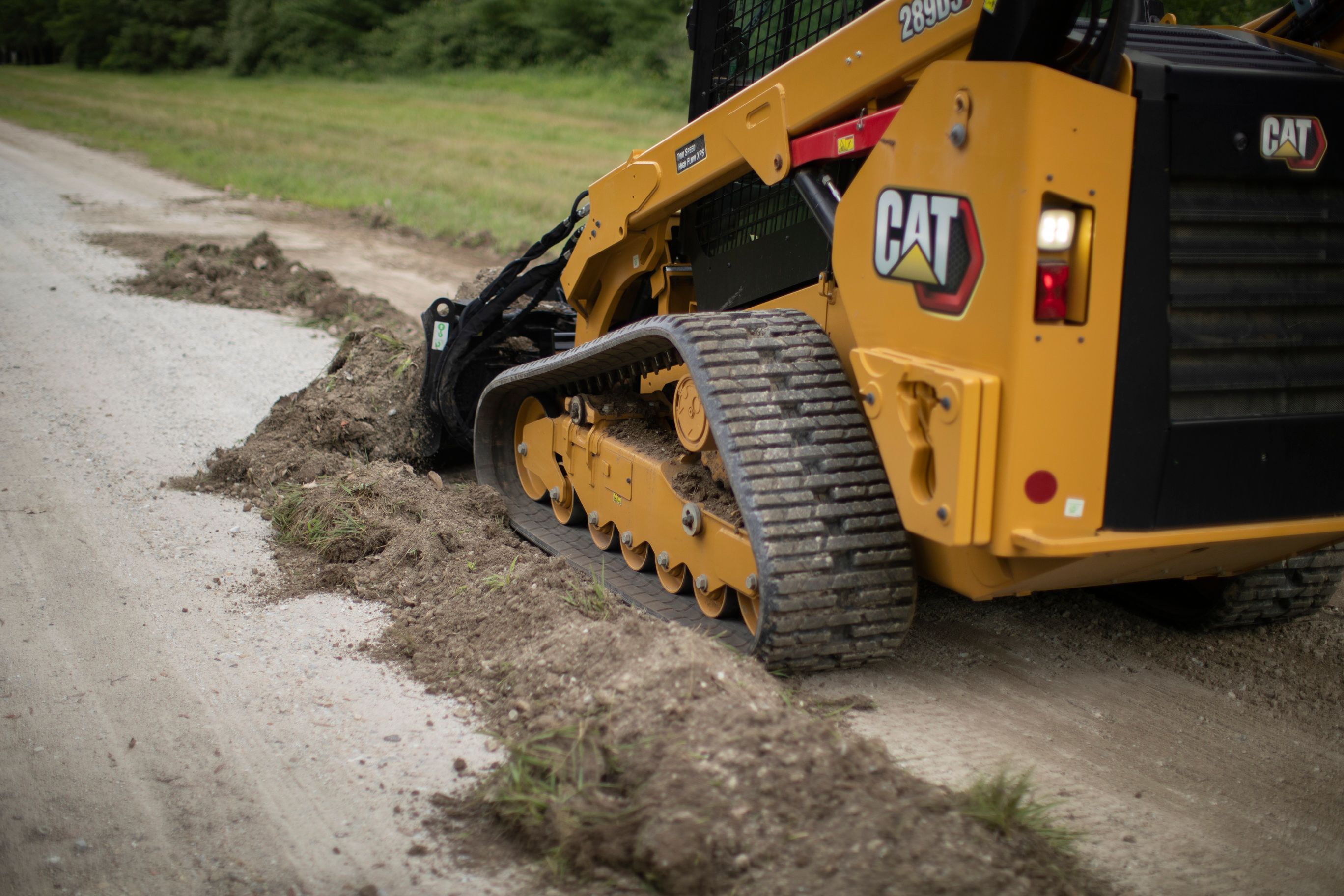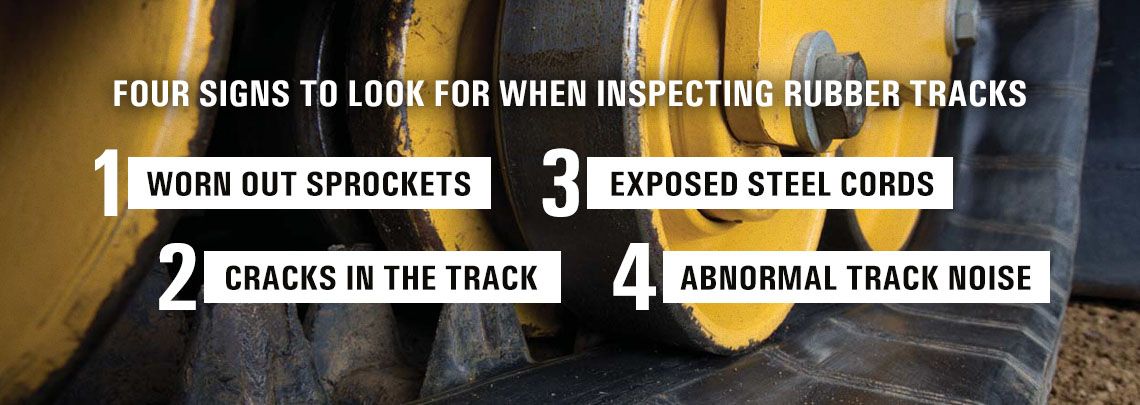

Sign In
Welcome! Sign In to personalize your Cat.com experience
If you already have an existing account with another Cat App, you can use the same account to sign in here
Register Now
One Account. All of Cat.
Your Caterpillar account is the single account you use to log in to select services and applications we offer. Shop for parts and machines online, manage your fleet, go mobile, and more.
Account Information
Site Settings
Security
Author: Small Business Expert | March 12, 2024 | Topic: Used Equipment
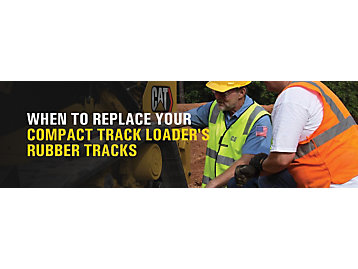
Unlike traditional wheels, rubber tracks distribute the loader's weight more evenly over a larger area. The equal distribution reduces the ground pressure and increases the stability needed for heavy equipment on different terrains.
The tracks are made from a durable rubber compound often reinforced with steel cords and other materials. They wrap around the undercarriage of a compact track loader, giving it its characteristic continuous loop. The thick rubber varies in pattern and depth, so you can drive it on mud, hard rock and soil.
Despite their durability, you'll need to invest in new rubber tracks eventually. When should you replace rubber tracks? This article will answer that question, inform you how you can increase the life span of your tracks and tell you how to replace tracks on a compact track loader when they've worn out.
How Long Do Rubber Tracks Last?
High-quality rubber tracks can last anywhere from 400-2,000 hours. There are a number of factors that will influence this number, such as:
- Operator skill: The operator's driving skill is one of the most significant factors that will lead to damage on your tracks — aggressive driving and high-speed operation can lead to wear faster than you think. Consider operator training to give them the right skills for the job.
- Machine usage: If the machine is in high use, the tracks will wear out quickly. Heavy-duty use over challenging terrains will accelerate wear and tear.
- Ground surface: Driving your compact loader on abrasive surfaces will cause more damage than soil and sand.
- Maintenance levels: Maintenance will increase the life span of rubber tracks. Looking after your machinery, addressing repairs quickly and storing everything correctly will increase its durability.
4 Signs That Indicate It's Time to Replace Your Rubber Tracks
Knowing when to replace the tracks on a compact track loader helps you stay on top of your jobs and protect your workers. When your machine's rubber tracks are worn down, they can lead to efficiency and safety issues that put you behind schedule. Here are four signs to look for when inspecting rubber tracks:
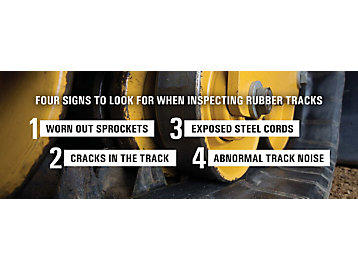
1. Worn out Sprockets
Sprockets are powered by a hydraulic motor that propels the tracks forward. The sprockets interlock with the tracks, and over time, they wear down the rubber and metal components. A worn track can have the same impact on the sprockets.
The sprockets' teeth generally wear out first and become rounded. Once this happens, they fail to engage with the tracks and then slip or jump. The tension will also slacken, causing further damage.
2. Cracks in the Track
Cracks are the beginning sign of a much bigger problem. Here's why:
- Structural integrity: Once the tracks' structure is damaged, it reduces their ability to withstand stress.
- Rapid deterioration: Small cracks can quickly expand, especially under the strain of a loader.
- External elements: Rolling over dirt and debris will cause these materials to enter the internal structure of the track. The steel cords will start to corrode if exposed to moisture.
3. Exposed Steel Cords
Another sign of when to replace your undercarriage tracks is when the cords are exposed. The rubber in the tracks acts as a protective layer for the inner cords. When the rubber wears down to the point where the cords are exposed, it means the track has lost a significant amount of its integrity.
The cords can get caught on sharp objects and rough surfaces and snap or come apart. They are also vulnerable to environmental elements, making them corrode and weaken.
4. Abnormal Track Noise
Any abnormal noise coming from your compact track loader is a bad sign, and a clicking sound could be an indication there's something wrong with the rubber tracks. That particular noise could be because the links are broken, which make a clicking sound as they rotate around the sprockets.
A grinding noise is another story. You could have debris caught in the system or problems with rollers or idlers. Popping and snapping noises can be a misalignment or damage to the track itself.
It is best to have a professional check the equipment whenever you hear these noises coming from your machinery.
How to Remove and Install Cat® Rubber Tracks
Is it time for you to replace your machine's tracks? Enlist at least two people to complete this job to ensure a safe environment. If needed, you can always have a professional install the new tracks for you. Here are the steps you'll need to follow:
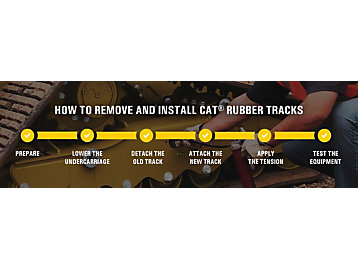
- Prepare: The track loader needs to be on a level, stable surface. Make sure the engine is off, and use wheel chocks to prevent movement.
- Lower the undercarriage: Use the loader controls to lower the undercarriage and relieve any tension in the tracks. Locate the tension release valve and use a tool to release it.
- Detach the old track: Once the tension is loose, you can remove the track. Start on one side and use a pry bar or a similar tool to guide it off the sprocket and rollers.
- Attach the new track: After removing the old track, you can put the new one on. Ensure it's oriented correctly — the track's tread pattern should match the direction of the loader's movement. Start at the sprocket and drape it around. Align the teeth with the sprocket grooves, rollers and idlers.
- Apply the tension: Next, you can apply tension to tighten the track. The track should be tight enough so it doesn't sag, but it shouldn't be so tight that it puts stress on the components.
- Test the equipment: Finally, lower the loader and conduct a final inspection before starting it up. Listen for any unusual noises and make adjustments as necessary.
Browse Parts and Equipment From Cat Used Today
Whether you're searching for used heavy equipment or parts for your existing fleet, Cat® Used is here to help. Browse our extensive online inventory of quality, durable Cat machines and attachments to find exactly what you need for your projects. Want to see what we have in person? Find your local Cat dealer today!
